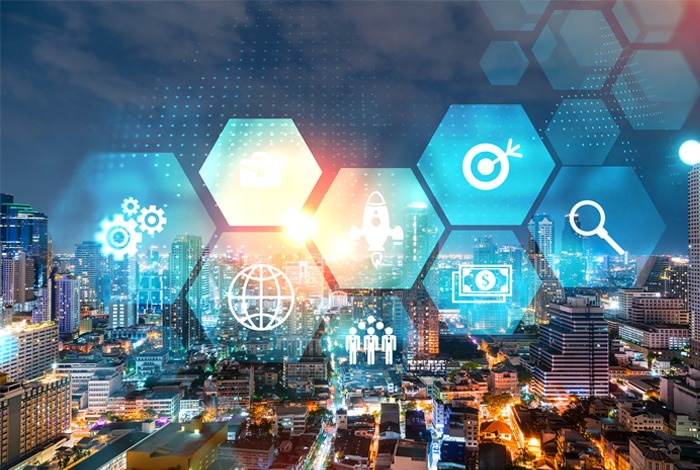8 Ways to Help Protect Your Business from Cybercrime During COVID-19
As aptly stated by Interpol:
Cyberthreats are constantly evolving in order to take advantage of online behaviour and trends. The COVID-19 outbreak is no different. Cybercriminals are attacking the computer networks and systems of individuals, businesses and even global organizations at a time when cyber defences might be lowered due to the shift of focus to the health crisis.
That means that as your business is settling into its new normal of working from home and stabilizing operations, cybercriminals are looking for novel ways to exploit emerging vulnerabilities – whether that’s using malware, ransomware, spyware, malicious domains, phishing attempts or other ways.
In fact, globally, we’ve already seen many successful cybercrime attempts in the past few weeks, including the malicious COVID-19 tracker app that uses surveillanceware to gain access to Android phone data and SMS messages, record audio, operate the camera, change settings and more.
Although no one is safe from cyberthreats, there are some immediate actions you can take to mitigate your risks of being the next victim.
To help, we’ve put together a checklist that businesses can use to review their online safety policies.
COVID-19 CYBER SAFETY CHECKLIST
1. Be on the lookout for phishing emails with links or attachments
Be on the lookout for phishing emails with links or attachments designed to entice you to click on links or open attachments about the latest and greatest offer related to coronavirus protections, or with urgent instructions from people like your “boss”. The intent is to get you to unwittingly download malware onto your device and the company’s systems. If you receive an email that feels off, it probably is. Do not open attachments, click on the links and never provide your passwords. Instead, alert your IT security team.
2. Watch out for ransomware attacks
Watch out for ransomware attacks. Phishing attacks often lead to ransomware, meaning that if you open the attachment or click the link it may encrypt your files and demand you pay a large ransom in exchange for the decryption key. Again, if you receive an email you weren’t expecting with links or attachments that seem odd to you, don’t open it.
3. Make sure your devices are up to date, as well as your anti-virus protection
Make sure your devices are up to date, as well as your anti-virus protection. By not maintaining your device with the latest updates or security fixes, you could be exposing yourself to vulnerabilities. Additionally, your anti-virus software may not have the latest signature files to protect against more recent attacks. Either manually update or set your anti-virus software to auto-update.
4. Don’t use work devices for personal activities
Don’t use work devices for personal activities. BitTorrent, downloads of games and other apps may include or lead to the download of malware as a “trojan horse”, which can put the network at risk. To be safe, don’t install any apps or software for personal use on corporate devices, and avoid browsing websites with unknown reputations.
5. Use multi-factor authentication whenever it is available
Use multi-factor authentication whenever it is available. Multi-factor authentication combines something you “know” (such as a password or pin) with something you “have” (such as a code sent over SMS or a bank card). This makes it more difficult for attackers, should they learn your password, to gain access to your systems and applications.
6. Avoid the temptation of using Bluetooth in a public place
Avoid the temptation of using Bluetooth in a public place. That’s because Bluetooth is an easy way for hackers to connect to your device or access it for data or identity theft.
7. Only work on secure, password-protected internet connections
Only work on secure, password-protected internet connections. If you have to use public WiFi, verify with the owner that the network is legitimate and only connect if it’s secured through a password and encryption (WEP or WPA). Even still, avoid accessing any confidential or sensitive information from a public WiFi network.
8. If your device is lost or stolen, report it immediately
If your device is lost or stolen, report it immediately. Quickly reporting a device that’s been lost or stolen will minimize the risk of fraud.
Cybercrime isn’t going away. In fact, if anything, it’s only increasing during a crisis like COVID-19.
The best way to be prepared it to know the facts, put safeguards in place and assume you’re being targeted by cyberthreats on a daily basis.
Still have questions? Our cloud security experts are happy to help. Reach out today.
WatServ demonstrates best-in-class capability and market leadership through proven technology and customer commitment.
About
WatServ is an IT solutions provider that helps organizations digitally transform through cloud technologies and managed services.
Serving clients as a trusted advisor since 2006, WatServ provides experience-tested, strategic solutions across all stages of the digital transformation journey. Clients choose WatServ to migrate infrastructure and applications to the cloud, secure critical data, implement disaster recovery, deploy virtual desktop, enable data-readiness for productivity solutions and manage IT environments.
Our clients span a broad range of industries, and we’re a global supplier of IT services for many Brookfield Portfolio Companies. To help our mid-size clients, we provide scalable offerings that simplify cloud adoption and drive business optimization. For enterprise clients, we co-create cloud solutions that enable stability and efficiency for complex IT tools and processes.
With more than 15 years of experience, WatServ has a track record of delivering quantifiable business results and a superior client experience. Ranked as one of Canada’s Top 100 Solution Providers for the last three years in a row, WatServ is always on.

